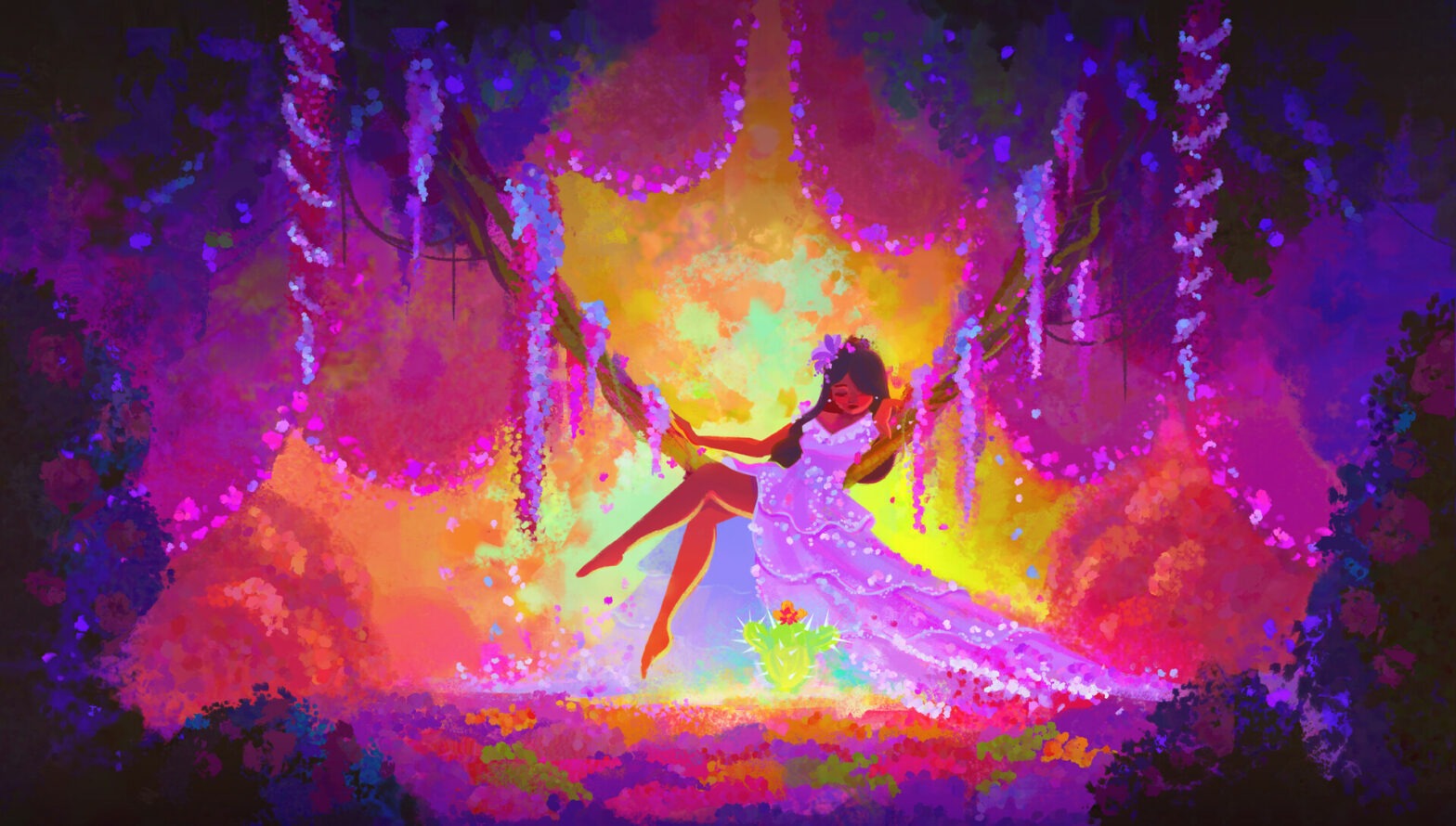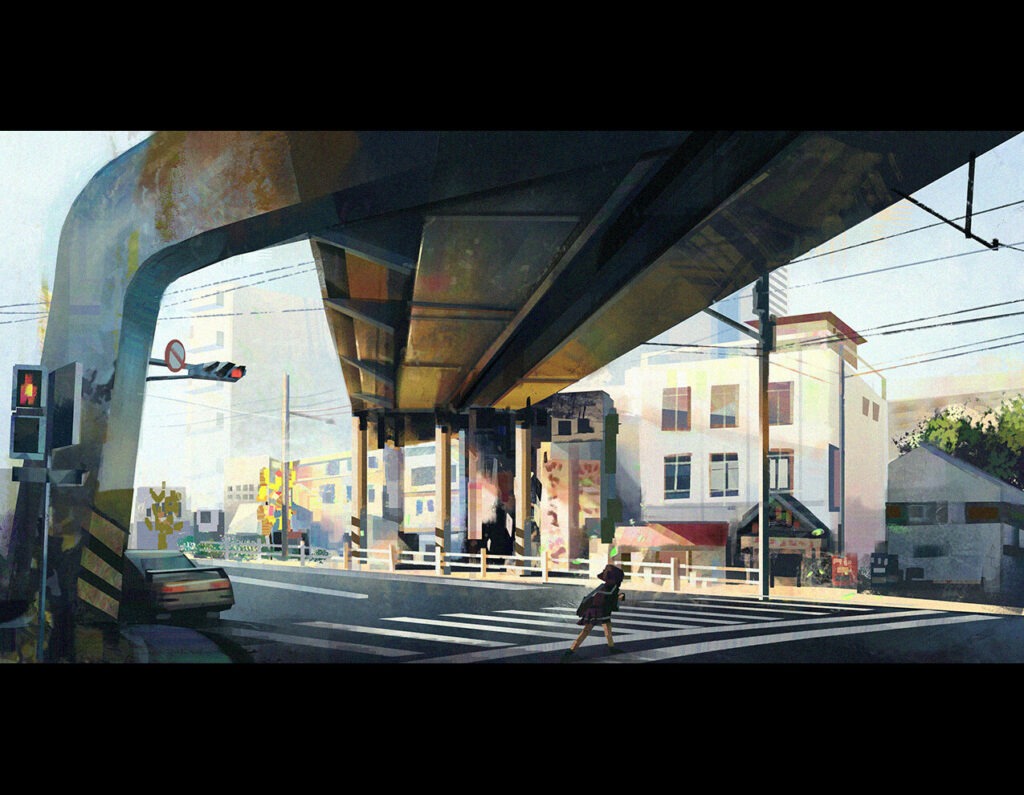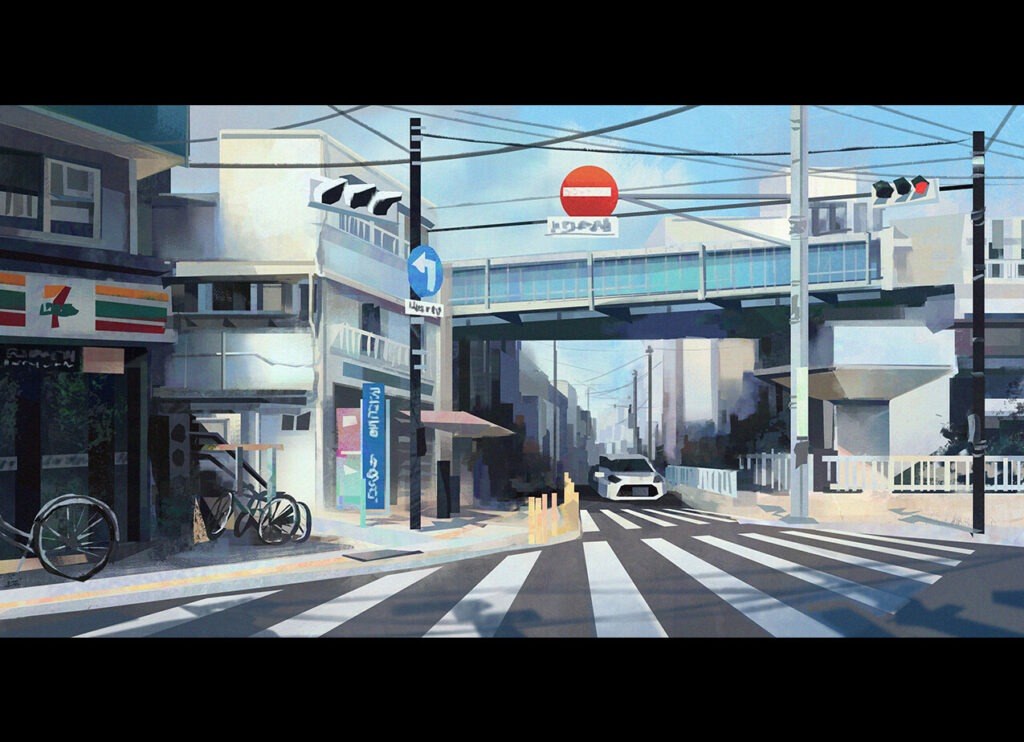There are multiple styles that come into place when talking about video game visual art. Some choose the road of hyper-realism, making a world with visually almost no difference to the one we know. On the other hand, others prefer a more surrealistic approach when it comes to the depiction of their project, evoking feeling and thought through metaphor and stimuli. No matter what the artistic style that expresses you is, there exists a common denominator elemental to any multimedia project: Background Art.
The videogame heroes we all know and love were the ones that brought out the best in us. We cried, shouted, and smiled with them on their journeys as children and even as adults. And although they are the centre of their stories, it is the world that their stories take place in that immerses us and transports us to a new reality. That world is expressed through background art. It is the canvas on which our visual stories take place. It control the narrative, our immersion and, most of all flood our image with the wonders of a world that the vision of the studio brought to life.
This time we’ll be having a conversation with one of these wonderful people that form all these worlds we came to love and enjoy. Samantha Satode is a young aspiring artist and, most recently, one of the background designers for the game Hi-Fi Rush. She was very kind in giving us her time to answer some of my questions about her life, her work, and her unbridled passion for art.
The following is a part of the interview that I had the joy of conducting.
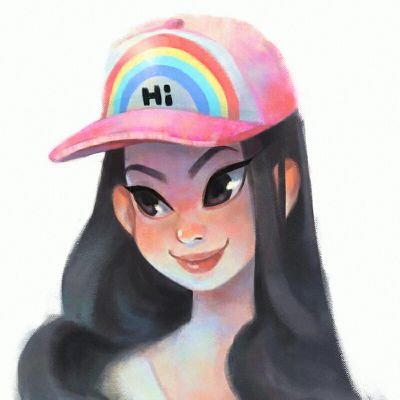
BG artist & Visual developer
Hi Samantha, I want to know some things about your life, especially your profession, and some of your projects. Can you tell me a few things about yourself and what kind of background you have in animation?
Where do I start? So I guess I always knew from a very young age that I’m creative and I love drawing, so I always wanted to pursue something that involves art. For college, I applied to an art school, but it was different from the type of art school I wanted. It was more because there weren’t a lot of options in the Philippines. Here it’s either you enter into fine arts, animation or multimedia. And then I took the one that was the most reasonable, I guess, for me, which is multimedia. It’s mostly geared towards graphic design and other digital media. And when I graduated college and got my first job as a graphic artist a year later, I just knew it wasn’t for me. So I took some time for myself to think about where I wanted my career to go, what kind of career path I wanted to follow, I wanted to choose. So I also took this time to self-study concept art and illustration. And when I was able to take up a few freelancing gigs and commissions until I landed a job in mobile games.
It was a local studio here, and it’s called Koo Apps. So my job there was mostly focused on making gaming assets, characters and some artwork for social media. After that, I kind of thought to myself, ” Hey, I kind of want to do background art and visual development next for animation.”. So at that time, I was kind of balancing work and my personal projects at the same time. And during that, meaning during the time I was working on my personal projects, I was at some point, contacted by Tit Mouse.
I kind of want to say that I think I got really lucky. So I was just constantly posting artwork on every social media platform like Art Station and Instagram. And I guess they were able to find my work somewhere there. Yeah. So honestly, when they reached out, I was having second thoughts about taking up the project because I was also still working at the mobile game company. I was worried that if I took this Tit Mouse project, I might get overwhelmed. Maybe at some point even get burnt out, but then I thought, “Hey this is a rare opportunity, and I might as well take it while it’s still there”. So I just took it, and it turns out it was a really fun project to work on.
So I took some time for myself to think about where I wanted my career to go, what kind of career path I wanted to follow, I wanted to choose.
Not a lot of us are in the same professions that you are in and you’ve been telling me about your professional career from its start to its current situation. Pertaining to that, I wanted to ask you, what are your most and least favourite parts about being an artist? What makes your day while working and what makes you go “Oh god, I wish I didn’t have to deal with this again.”
So favourite thing about being an artist is that I love what I do. I get to work on things that I enjoy working on, or I’ve always wanted to pursue working on, which is being part of the animation and gaming industry. So those are my favourite parts. As well as just being around a team of passionate and creative artists, I think that’s the part that really inspires me to keep going and keep doing what I do.
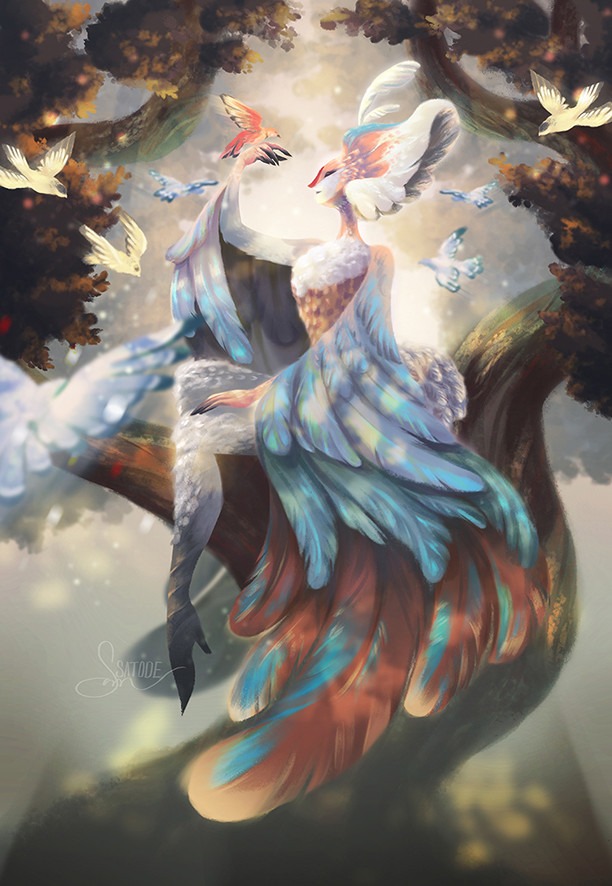

Is cooperation with other people something that you had to learn how to deal with how Or is it something that came real naturally to you?
I think at some point it’s something that I had to learn during the process because I’m a very introverted person, so I had to learn along the way how to communicate with people and be more forward with what I need from them or communicate. Simply being able to communicate things clearly. So yeah, I think those are skills that I was able to dev to develop, and it really helped me.
being around a team of passionate and creative artists, I think that’s the part that really inspires me to keep going and keep doing what I do
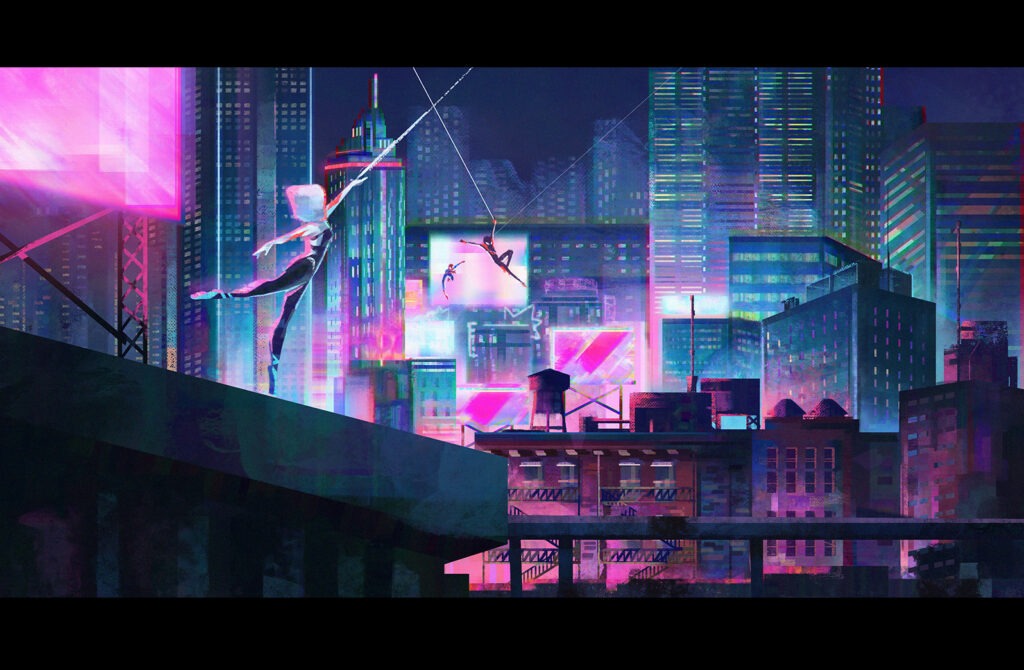
Well, now that we know some stuff about you and specifically about your work at Tip Mouse and what you did before that.I wanted to know specifically what is your biggest influence when it comes to art. What, for example, gives you that spark that makes it so easy for you to be so creative?
My biggest influence, so I would have to say all started from a lot of the video games and animations in movies that I used to watch in my childhood. That’s like the root of it all. And that’s kind of what sparked my dream, I guess, to just be involved in the production of making something. So being a part of that, a part of the community and the production behind making either a film or game and then being able to see it, being able to see other people enjoy it. I think that’s like my biggest inspiration.
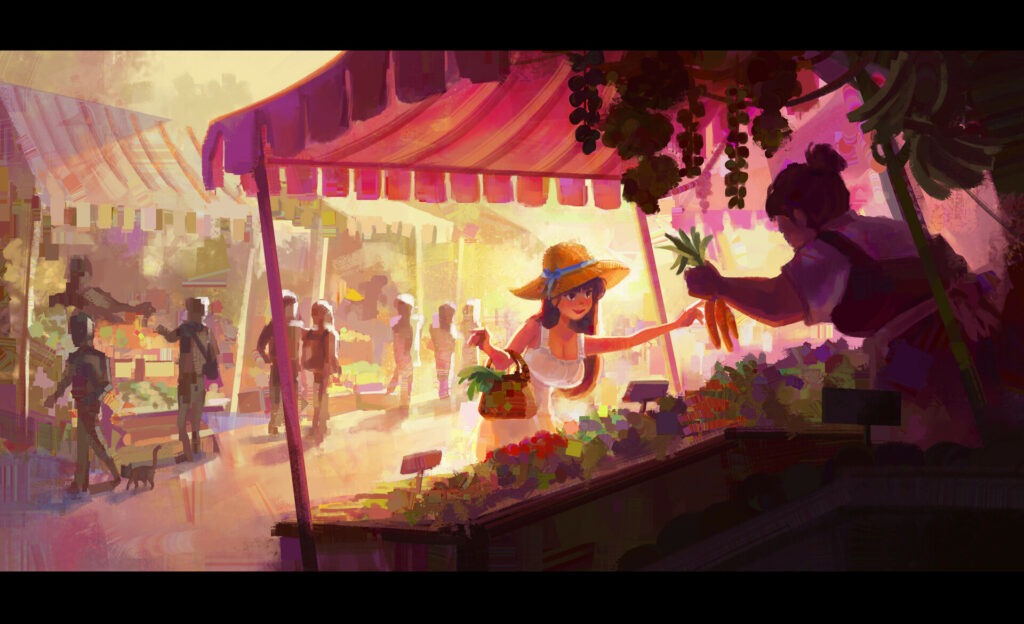
Continuing on the inspiration topic, a substantial part I’ve seen of your work is heavily influenced by the Anime Evangelion. How come, you have such a strong connection with that specific anime?
Yeah, sure. Yeah. Evangelion was, honestly, the gateway anime for me to learn because I wanted to learn about painting, and enjoying Mech. And it’s something that I rarely painted before. So I wanted to get out of my comfort zone. I felt the art and the mech for Evangelian were really appealing to me. So yeah, I studied the design, and that’s kind of how I got into the obsession of drawing a lot of Evangelion.
So being a part of that, a part of the community and the production behind making either a film or game and then being able to see it, being able to see other people enjoy it. I think that’s like my biggest inspiration.
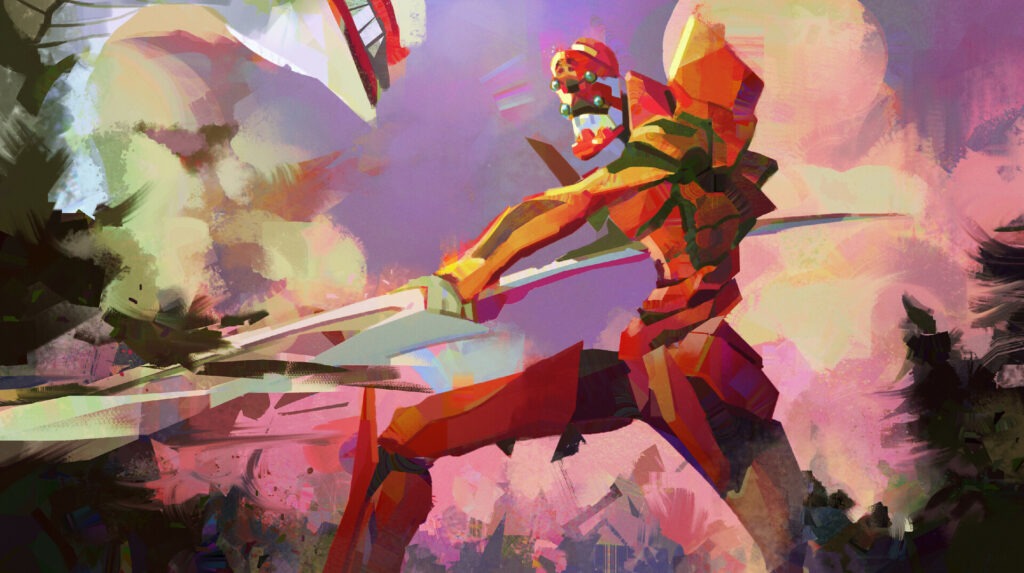
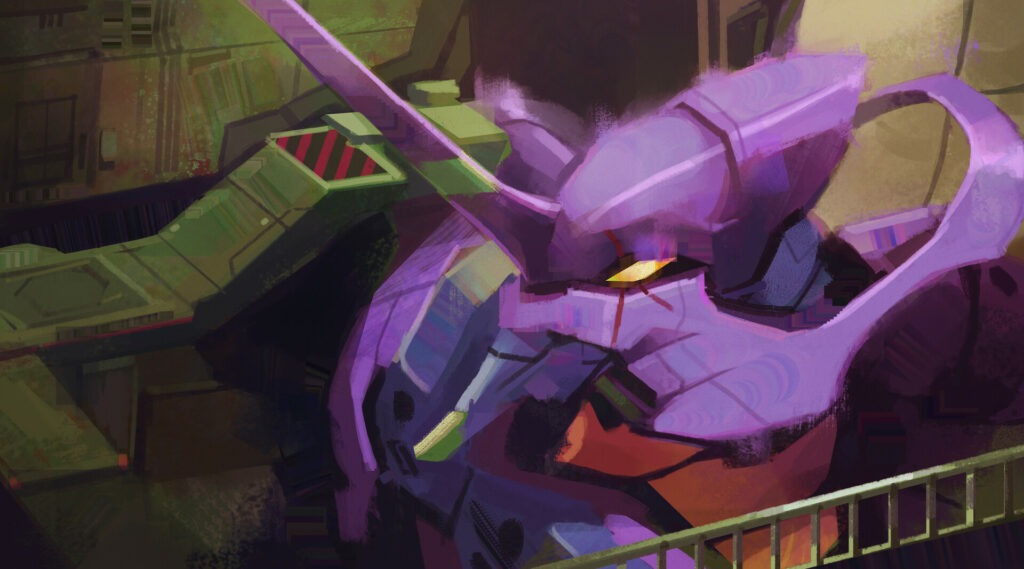
So, the reason i sought you out for this interview was that Im a huge fan of one of the projects youve worked on, Hi-Fi Rush. And what I loved even more, well, except the gameplay and the music, was the fact that it was a breathing, living world.Vibrant and colourful. Can you share with me your experience of working on that spesific project?
My experience when they approached me about the project was that I didn’t actually know what it was. All I knew back then was a team of us were going to create an animation cut scene for this video game. Then I also discovered that the team I was working with also came from different countries. So it was really nice to know that a team of diverse artists was working on something like this. I was able to learn a lot from them and grow. And yeah, when the game came out, I was a bit surprised how there was a lot of positive feedback from it.
If you want more of this content, don’t forget to check out Marilita Choleva’s interview with industry veteran Duy Khanh Nguyen.
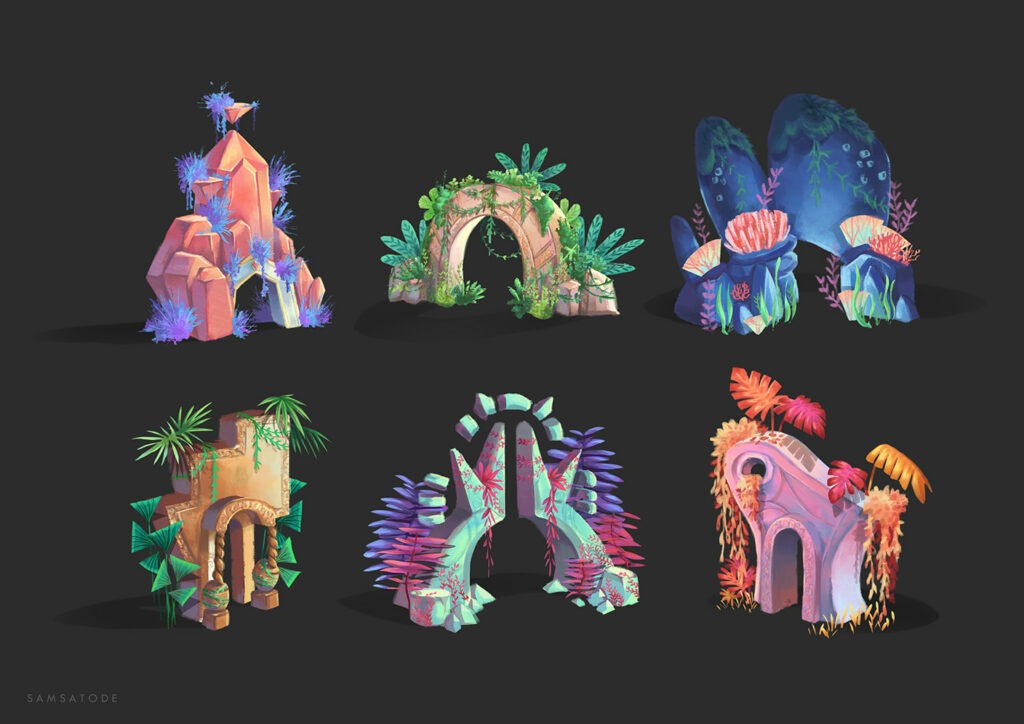
I think one of the most difficult things I had to deal with at the time was that when they reached out to me it was still during the pandemic so everyone was still in quarantine. I was kind of worried about how this would work because it’s like there were a lot of time differences that were involved. And at first, I was worried about that, but turned out to be a good advantage for us. It made me realise that it’s possible for studios to reach out to new talents across the board or across other countries. And also for artists to be able to work remotely while having this opportunity to break through the industry.
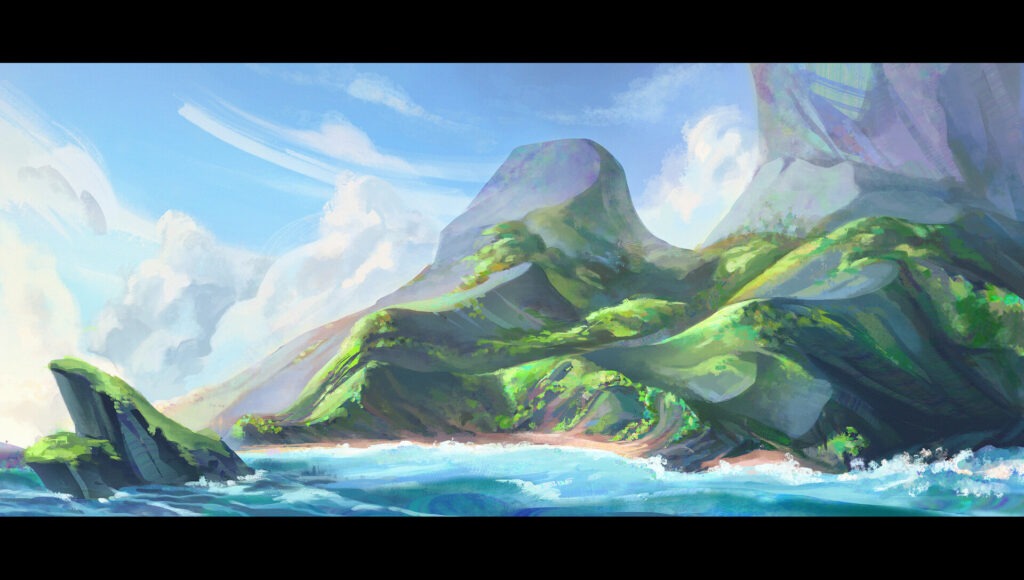
Does your environment help you with your work?
I think my environment has been very positive so far. Now that I’ve been working from home, actually, I’m able to manage my work-life balance a lot better.
It made me realise that it’s possible for studios to reach out to new talents across the board or across other countries. And also for artists to be able to work remotely while having this opportunity to break through the industry.
Very interesting. I want to move on, and I want to ask some questions specified in your own personal work. I’ve noticed that in your work, you always use a lot of vibrant palettes. You have a big love for colour and light. Are there any reasons for the fact that you enjoy using colourful palettes or is that something that just came up and suited your skills better?
I’m going to say both. I think over the years, my art style has grown a lot. It was definitely influenced by a lot of the artists that I admire. But I think now I’ve developed into a style that I’m comfortable in and that represents me, which is that I enjoy experimenting with different colour palettes. I always like to think that when I’m painting, I am trying to tell a story, and I try to bring that story to life through mood and colours. Nowadays I definitely enjoy experimenting more with different styles. I always like to go out of my comfort zone when it comes to creating art. And I think it’s also part of my growth as an artist. So yeah, I always try to learn new things from people I look up to or things that move me, whether it’s a film or a movie, or maybe another Evangelion piece.
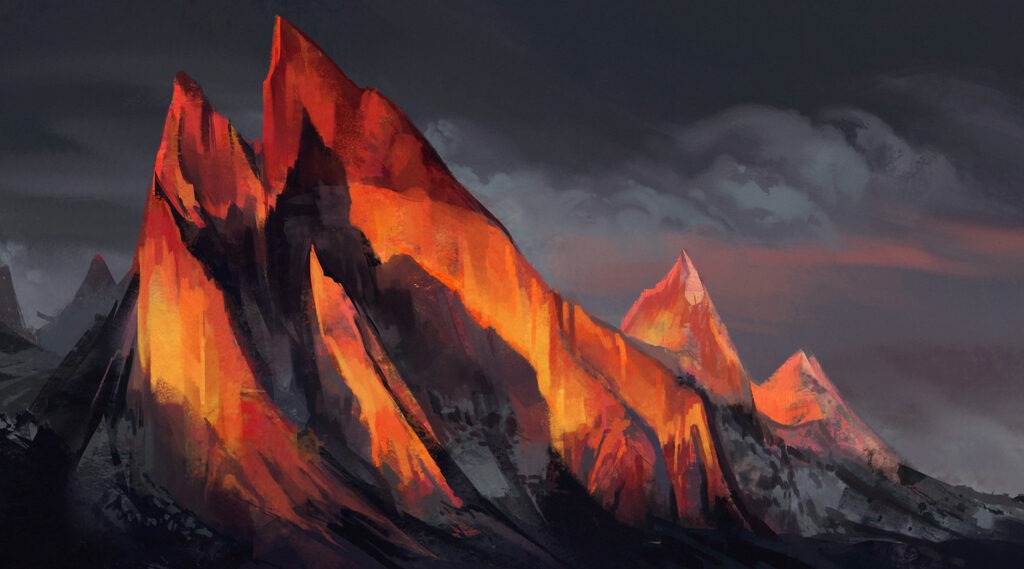
How do you manage your work-life balance, for example, what would be the advice you would give to a person that’s just starting out and doesn’t know if they should skip one or two meals to work on a project? What do you think would be good advice for work-life balance for a new artist?
Okay. So I would definitely prioritise taking care of your physical and mental health. Since I think most artists are always staring at the screen and sitting down for many hours. I think it’s important to have that balance of getting some sort of physical activity or just going outdoors for just running errands would be enough. Just walking across the street to buy something from a convenience store, I think. Yeah. And another thing is mental health, I think is just as important. And it’s something that I’ve been prioritising lately and I’m very grateful for the studio and my friends for being very understanding of that.
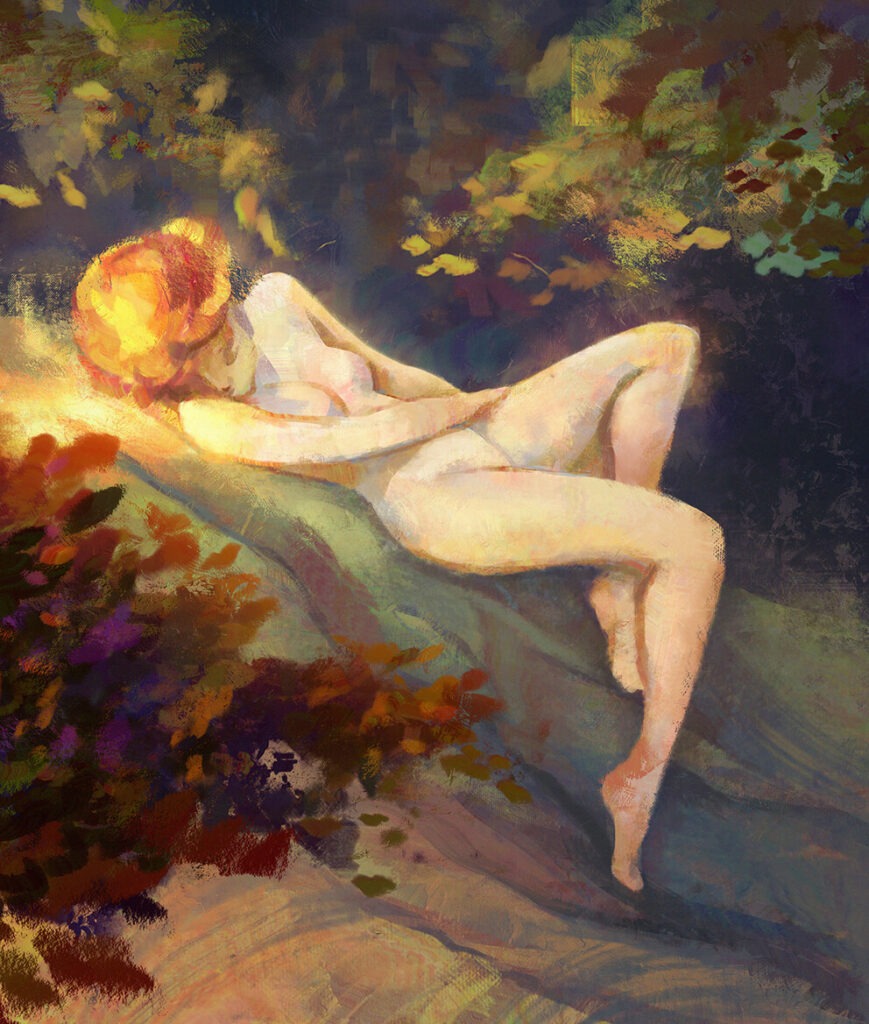
From everyone in the Bgeek team, we’d like to thank Samantha Satode for making this interview happen and providing us with valuable insights into the industry. Give her some love on her Instagram and ArtStation for giving us her time.
